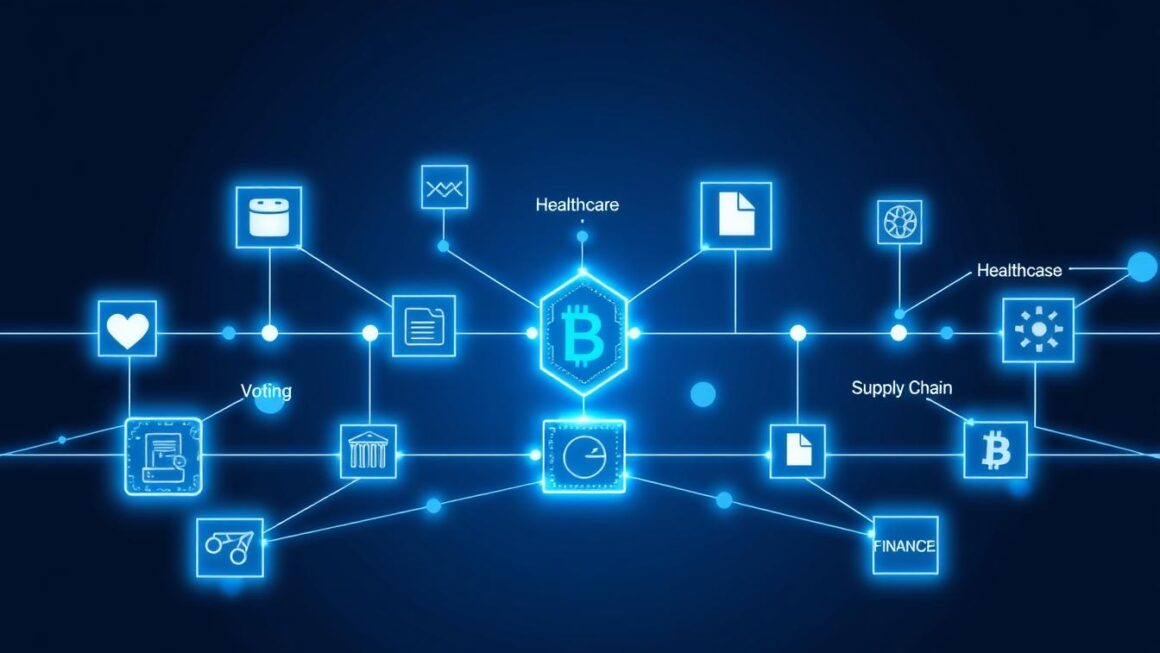Can we ever truly be anonymous in a world where our biometric data is increasingly used for identification?
We love the ease and safety that biometric technology brings. It lets us unlock our devices with a glance and speed through airport security with a digital ident. But, this tech also raises a big concern: once our biometric info is out, it’s out for good.
This “forever ID” issue highlights the privacy risks of relying more on biometrics. As we move forward, it’s key to grasp the impact of this growing trend.
The Evolution of Biometric Technology
Biometric technology is changing our lives fast. Biometric technology brings us unmatched convenience and security. It’s changing how we prove who we are and interact with the world.
It’s key to know about the different types and uses of biometric tech. Biometric identifiers are unique traits that help verify someone’s identity.
Types of Biometric Identifiers
There are many kinds of biometric identifiers. These include fingerprint ID, facial recognition, voice recognition, iris scans, and gait analysis. Each has its own benefits and is used in various ways.
| Type of Biometric Identifier | Examples | Common Applications |
|---|---|---|
| Physical Biometrics | Fingerprint, Face, Iris | Smartphone Unlocking, Border Control |
| Behavioral Biometrics | Voice, Gait, Signature | Voice Assistants, Banking Authentication |
From Science Fiction to Daily Reality
Biometric tech has moved from science fiction to our everyday lives. Facial recognition and fingerprint ID are now common. We use them to unlock phones, enter secure areas, and make payments.
As biometric technology keeps improving, we’ll see new uses in fields like healthcare and finance. The future looks exciting.
The Convenience-Privacy Paradox
The rise of biometric authentication has brought a paradox. It combines ease and security with privacy concerns. Technologies like facial recognition and fingerprint scanning are now common in our lives. They offer a convenient and secure way to prove who we are.
Streamlining Authentication Processes
Biometric authentication makes verifying identities easier. It eliminates the need for complex passwords and PINs. This makes using technology more enjoyable and less frustrating.
For example, facial recognition lets you unlock your phone with just a glance. Fingerprint scanning provides a quick and secure way to access important information.
Enhanced Security Benefits
Biometric data, when secured well, offers better security than traditional methods. Fingerprint data safety is key, as it’s hard to copy or steal.
Biometric authentication also lowers the risk of password breaches. This is because biometric data can’t be guessed or shared easily.
| Authentication Method | Security Level | Convenience Level |
|---|---|---|
| Biometric Authentication | High | High |
| Password/PIN | Medium | Low |
| Two-Factor Authentication | High | Medium |
The Hidden Costs of Convenience
Biometric technology has many benefits, but there are hidden costs. The collection and storage of biometric data raise big facial recognition risks and privacy worries. This data is often very personal.
Also, biometric identifiers are permanent. Once they’re compromised, they can’t be changed like passwords. This could lead to long-term security risks.
Biometric Data and the Permanent Identifier Problem
Biometric technology is convenient but poses a challenge. Once compromised, biometric data is forever lost. This is because biometric identifiers, like fingerprints or facial recognition, are permanent and unchangeable. Unlike passwords, which can be changed, biometric data stays the same for life.
Why You Can’t Change Your Face Like a Password
Biometric identifiers are a big concern because they can’t be changed. Our faces, fingerprints, and other biometric traits are not like passwords. Once compromised, biometric data can’t be altered or replaced. This raises serious questions about the long-term security of biometric systems.
- Biometric data is unique and personal.
- It cannot be changed or updated like a password.
- Compromise of biometric data has lifelong implications.
Data Breach Implications for Biometric Information
Data breaches involving biometric information are more severe than those involving passwords. When biometric data is stolen, it’s not just a matter of changing a password. The very identity of an individual is at risk. This makes protecting biometric data a critical concern for both individuals and organizations.
The implications of a data breach are further complicated by the risk of identity theft and misuse of biometric data. Organizations that store biometric data must implement robust security measures to prevent breaches and protect sensitive information.
The Lifetime Vulnerability Factor
The lifetime vulnerability factor of biometric data is a pressing concern. Once compromised, an individual’s biometric data remains vulnerable for their entire life. This is unlike passwords, which can be updated regularly to mitigate risk.
To mitigate this risk, we must adopt a proactive approach to data protection and digital id privacy. This includes implementing robust security measures, ensuring transparency about how biometric data is used, and providing individuals with control over their biometric information.
Legal Questions of Ownership and Control
The use of biometric data raises important legal questions about ownership and control. Who owns our biometric data? Do we have control over how it is used and shared? These are critical questions that need to be addressed through legislation and regulation.
Clear laws and regulations are necessary to ensure that biometric data is handled responsibly and with respect for individual rights. This includes ensuring that individuals have the right to consent to the use of their biometric data and to opt-out if they so choose.
The Expanding Surveillance Ecosystem

We’re seeing a big growth in surveillance, thanks to governments and companies. This is mainly because of biometric surveillance technologies. They’re being used in many parts of our lives.
This growth is worrying, with big privacy risks and the chance of data misuse. It’s important to know what’s driving this surveillance.
Government Collection Programs in the United States
The U.S. government is collecting more biometric data. Programs like the Department of Homeland Security’s (DHS) Biometric Entry-Exit system and the FBI’s Next Generation Identification (NGI) system are gathering lots of data. This includes fingerprints and facial recognition.
These programs say they’re for national security and law enforcement. But, they also raise big privacy and technology misuse concerns.
| Program | Description | Biometric Data Collected |
|---|---|---|
| DHS Biometric Entry-Exit | Tracks entries and exits of travelers | Fingerprints, Facial Recognition |
| FBI’s NGI | Enhanced criminal identification | Fingerprints, Iris Scans |
Corporate Data Harvesting Practices
Companies like Facebook and Google are also collecting a lot of data. They get personal data, including biometrics, through their services and platforms.
This data is used for ads and improving AI. But, it also raises big privacy risks. The lack of control over how this data is used is a big worry.
How Surveillance Creep Threatens Civil Liberties
More surveillance, or surveillance creep, is a big threat to our freedoms. As more of our lives are watched, it’s harder to speak freely and gather.
The risk of security solutions being used for mass surveillance is real. We need strong rules and checks to protect our rights.
By understanding the surveillance growth and its risks, we can tackle privacy risks from biometric surveillance. We can work towards security solutions that keep us safe and free.
Current and Emerging Privacy Risks
Biometric technology is everywhere now, and it’s changing how we protect our privacy. The use of biometric data for things like logging in and identifying us has brought new privacy risks. These risks were hard to imagine before.
One big worry is identity theft in the biometric age. Unlike passwords, biometric data like fingerprints or facial scans can’t be changed if stolen. This makes keeping biometric data safe very important.
Identity Theft in the Biometric Age
Biometric authentication is used in many areas, from banks to border control. If biometric data gets into the wrong hands, it can lead to serious identity theft. This can have big consequences for people.
In 2019, a U.S. government contractor’s data breach exposed over 600,000 federal employees’ biometric data. This shows we need strong security to protect our biometric info.
| Industry | Biometric Data Used | Potential Risks |
|---|---|---|
| Financial Services | Fingerprint, Facial Recognition | Unauthorized access to financial accounts |
| Border Control | Facial Recognition, Iris Scan | Identity theft, tracking without consent |
| Workplace Security | Fingerprint, Voice Recognition | Unauthorized access to secure facilities |
Algorithmic Bias and Discrimination
Another risk is algorithmic bias and discrimination in biometric systems. Studies have found that facial recognition tech can be biased against some groups. This can lead to wrong identifications or unfair treatment.
This bias is serious, mainly in law enforcement and justice. Wrong identifications can cause wrongful arrests or convictions.
The Erosion of Anonymity and Free Expression
Biometric surveillance, like facial recognition, is eroding our right to anonymity and free speech. Being able to move freely without being tracked is key to a free society.
As biometric surveillance grows, so does the fear of being monitored. This might make people self-censor or avoid public places.
Regulatory and Ethical Frameworks

In today’s world, it’s vital to have strong rules and ethics for biometrics. This is to keep our rights safe and encourage good innovation. As biometric tech gets more common in our lives, we need clear guidelines and standards.
The rules for biometrics are complex and varied. There are efforts to make laws that handle biometric data’s unique challenges. In the U.S., for example, there’s talk about federal laws for biometric info.
Current Legislation in the United States
In the U.S., laws about biometrics vary by state. Illinois’ Biometric Information Privacy Act (BIPA) is a key example. It shows why we need a unified federal law for biometric data protection. Now, there are federal bills trying to set national privacy standards for biometrics.
| State | Legislation | Key Provisions |
|---|---|---|
| Illinois | Biometric Information Privacy Act (BIPA) | Requires consent for biometric data collection, regulates storage and destruction |
| Texas | Capture or Use of Biometric Identifier Act | Prohibits the capture or use of biometric identifiers without consent |
| Washington | Biometric Identifiers Law | Regulates the use of biometric identifiers, requires disclosure |
Industry Self-Regulation Efforts
Government rules are important, but companies also play a big role. Many firms have their own rules for using biometric data. They focus on security, getting consent, and being open about data use. This helps build trust and shows they care about ethics.
Ethical Design Principles for Biometric Systems
It’s key to design biometric systems with ethics in mind. This means putting privacy first, collecting less data, and securing it well. By doing this, we can avoid risks and make sure these technologies help society. Ethical design at every stage ensures systems are both useful and respectful.
In conclusion, we need a mix of laws, company rules, and ethical design. This will help us enjoy the benefits of biometric tech while keeping our rights and privacy safe.
Practical Steps to Protect Your Biometric Privacy
Keeping our biometric privacy safe needs a few steps. We must know our rights, use the right tech, and push for better laws. As we use biometrics more, protecting our digital id privacy and biometric data safety is key.
To keep our biometric info safe, we need to know our rights and the tech used. We should understand how our biometric data is gathered, stored, and used by others.
Understanding Consent and Opt-Out Rights
Knowing our consent and opt-out rights is key to protecting our biometric privacy. We must know when and how our biometric data is used. Reading privacy policies of companies that handle our biometric info is important. Some U.S. states require companies to get our consent before collecting biometric data. We also have the right to opt-out of biometric data collection when we can.
Here’s a quick look at consent and opt-out rights:
| Right | Description | Action |
|---|---|---|
| Consent | Explicit permission to collect biometric data | Read privacy policies carefully |
| Opt-Out | The right to stop biometric data collection | Look for opt-out options in service settings |
| Access | Right to access collected biometric data | Request data from companies |
Privacy-Enhancing Technologies and Practices
Using privacy-enhancing technologies and practices is vital for protecting our biometric privacy. Tools like encryption and secure multi-party computation can keep our biometric data safe. For example, some systems use homomorphic encryption to process data without decrypting it. Practices like collecting less biometric data and using data protection measures also help.
- Homomorphic encryption
- Secure multi-party computation
- Biometric data minimization
Advocating for Stronger Protections
Lastly, pushing for stronger protections is critical for our biometric data safety. We should support laws that focus on digital id privacy and biometric data safety. We can also raise awareness about the need for biometric privacy and hold companies accountable for their data handling.
By knowing our rights, using privacy tech, and pushing for better laws, we can greatly improve our biometric data safety. This way, we can protect our privacy in the biometric age.
The Future of Biometric Data and Individual Rights
Biometric technologies are changing our lives, but at what privacy cost? As we look ahead, we must think about how these changes affect our rights. These technologies are getting smarter, used in security, healthcare, and everyday life.
Emerging Technologies and Privacy Implications
New biometric tech, like advanced facial recognition and behavioral biometrics, worries us about privacy. These tools could invade our personal space, if not watched closely. For example, facial recognition in public could mean constant surveillance, taking away our right to stay anonymous.
Let’s look at some new tech and how they might affect our privacy:
| Technology | Description | Privacy Implication |
|---|---|---|
| Advanced Facial Recognition | Enhanced accuracy in identifying individuals | Potential for mass surveillance |
| Behavioral Biometrics | Analyzing patterns in human behavior | Risk of profiling and discrimination |
| Biometric Wearables | Continuous monitoring of physiological signals | Concerns about data ownership and control |
Balancing Innovation with Human Rights
To avoid the downsides of biometric tech, we need to find a middle ground. This means making strong rules, being open about data use, and designing ethically. This way, we can enjoy the tech’s benefits while keeping our rights and privacy safe.
Key strategies for balancing innovation with human rights include:
- Developing and enforcing strong data protection laws
- Encouraging industry self-regulation and ethical practices
- Promoting public awareness and education on biometric technologies
By using these methods, we can make sure biometric data and individual rights evolve together. This way, we respect both tech progress and human dignity.
Conclusion
Biometric technology is changing how we use digital ident. It brings both benefits and risks. Our biometric data, like facial recognition and fingerprints, is permanent and can be misused if not protected.
Biometric surveillance by governments or companies raises big questions. It’s important to have strong rules to protect our privacy. These rules should ensure we know how our data is used and agree to it.
We need to find a balance between new tech and our rights. This way, biometric data can improve our lives without taking away our privacy. We must stay alert and work to solve the problems that come with new technologies.



